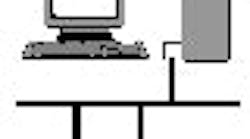IT APPEARS that all of us are becoming not only more reliant on our suppliers, but also on the information they provide us. Gone are the days of healthy skepticism where the proverbial “proven in use,” backwards compatibility, long term support, openness, and interoperability were required before the engineer would be willing to consider installing something in the plant.
Since 1994, Foundation fieldbus (FF) has been demonstrating backwards compatibility and interoperability. After about 10 years since the introduction of the FF “check mark,” Foundation fieldbus is now widely accepted as a reliable platform on which to design, operate, and control a facility – though many people are still unsure about “control in the field,” despite the fact they were doing this with pneumatics 50 years ago. When asked why they are not using control in the field, the most common answer is that they want to see it proven elsewhere.
It is therefore interesting that we do not hear the same degree of skepticism about FDT/DTM. Perhaps it is because people are “only” using FDT/DTM to communicate with the field devices for maintenance and diagnostics and since that is not really control it is less important. Unfortunately, because changes can be made to the operating conditions of a device via the maintenance system, it can no longer simply be treated separately from the control system – they are an integrated whole.
FDT/DTM technology adds another layer of software and hence potential complexity to the system and with the new enhancements to EDDL FDT/DTM is to some extent a duplication of effort; FDT/DTM is a large effort since the software can be multi-megabyte software download (350 Meg). Obviously, FTD/DTM cannot execute in a field device alone – at least not yet. Because FDT/DTM is another layer between the field device and the maintenance technician it adds another degree of complexity to the system. Obviously, due to its file size, FDT/DTM must reside on a dedicated computer.
Interestingly, if you investigate the FDT-JIG website, approximately 85% of the FDT/DTM files available for download are from two European suppliers – not what one would expect from a global standard especially one that promotes the large membership base on its other pages. Granted FDT/DTM has only had half the time of the fieldbus technologies that it uses for the underlying technology to provide basic communications to get broad manufacturer support but two suppliers does not represent global acceptance.
Despite these potential shortcomings, FTD/DTM is a valid part of the control system environment; it is just that it is not well suited for control. Therefore the whole FDT/DTM, Foundation fieldbus, HART, Profibus story is like comparing apples and oranges. Each of the members of this list is a fruit, and each group has its proponent and detractors. However, each of these groups and associated software has completely different properties, so until we show a healthy skepticism for any technology, and do our homework, we as engineers are not fulfilling our duty. It is an engineer’s responsibility to find the best tool for the task at hand and as necessary make trade-offs to select the integrated solution that satisfies the most objectives without contravening any of the boundary conditions under which it must operate.
End users are now beginning to realize that it is the maintenance and diagnostic information capabilities of the device that will provide the life cycle savings and justification for installing new devices. However, we must not succumb to the lure of the latest technology just because it is new. We must continue to critically evaluate all the tools available to us not just for ease of installation/initial use, but also for their complete life cycle support. Remember, with today’s leaner organizations, it is our duty as engineers to provide the information required by our leadership to make the best overall economic decision as well.
I may not be from Missouri, but I still want you to “show me” and therefore ask that those of you with success or horror stories using Fieldbus, FDT/DTM or other industrial network technologies to send them to me to share with our readers.
| About the Author |




